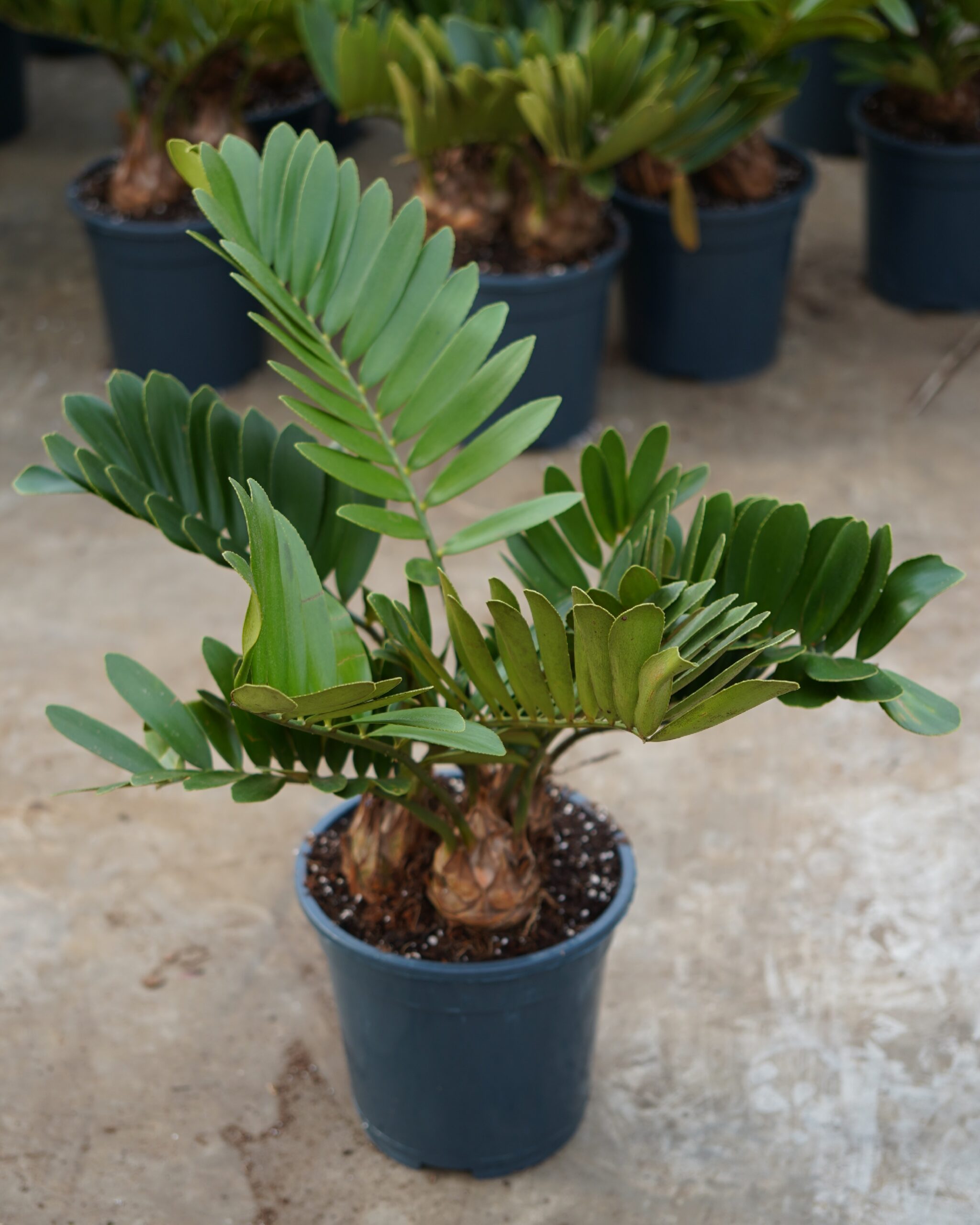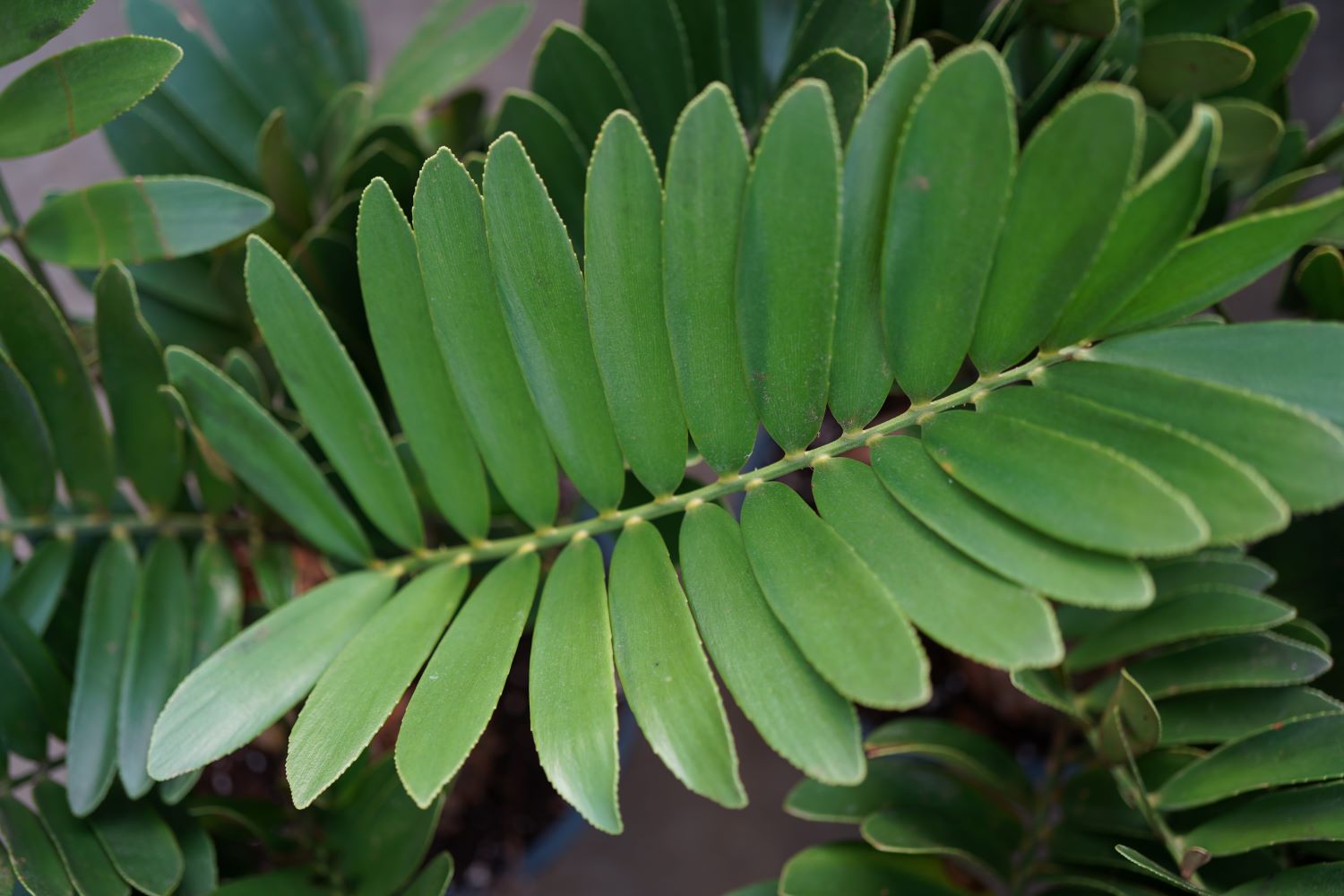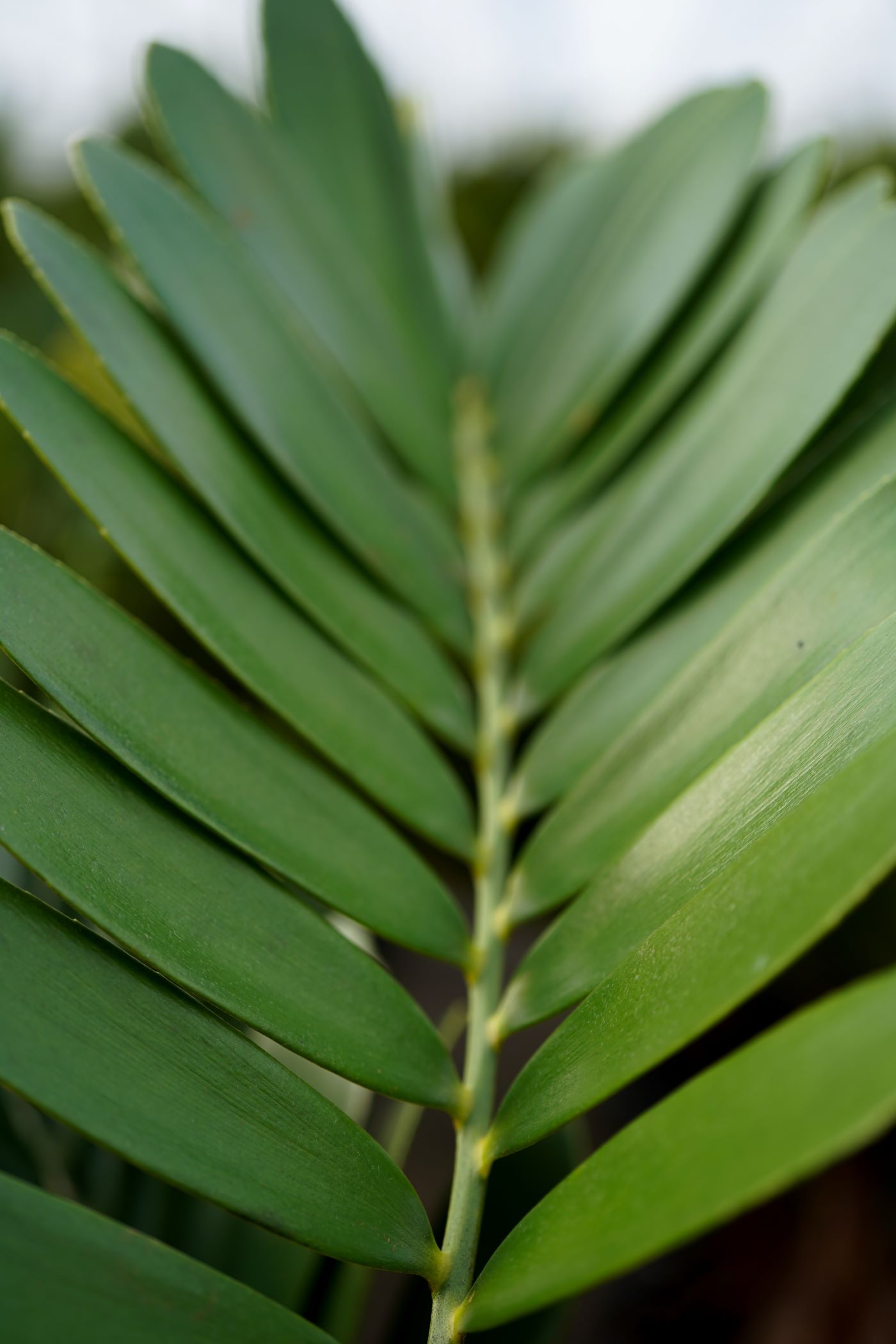Zamia Furfuracea
The Zamia furfuracea, not to be confused with the Zamioculcas, is a plant that belongs to the Cycad family and originates from the southern coastal region of the state of Veracruz in Mexico. Its leaves form a circular crown that resembles fern or palm fronds, which is why it’s also known as the “Cardboard Palm.”
Zamia is a tropical plant that can grow over 1 meter tall and up to 2 meters wide. However, patience is key—this plant takes time to reach full maturity. The older and more developed the trunk becomes, the faster it will grow. This tropical beauty is cultivated by Duijn-Hove.
Zamia Care
Bringing a Zamia furfuracea into your home means adding a low-maintenance plant to your collection. A little care goes a long way! Want to know the best way to take care of your Zamia? Here’s a quick summary of our care tips:
- Keep the soil moist, but avoid overwatering
- Partial shade or full sun is this plant’s happy place
- Use well-draining potting soil
- During summer, it can enjoy time outdoors on your terrace or balcony
Zamia Furfuracea Care tips
How much water does a Zamia furfuracea need?
The best way to care for your Zamia is to water it regularly so the soil never dries out completely. But be careful—this tropical plant doesn’t like too much water either!
Where is the best spot for my Zamia?
No surprise here: the Zamia loves a bright spot with plenty of sunlight. However, it will also do well in partial shade.
Can a Zamia furfuracea go outside?
Yes, it can. But only in summer when it’s warm enough—this green friend is no fan of the cold.
Does a Zamia need to be repotted?
Yes, the Zamia is a perennial that should be repotted every 2 to 3 years, depending on how fast it grows.
Zamia Furfuracea fertilizer
Fertilize your Zamia once a year in spring.
Is the Zamia poisonous?
Yes, the Zamia furfuracea is toxic. It contains cycasin, a compound that is harmful to both humans and animals. So be sure to keep it away from pets and children.
Should I prune my Zamia furfuracea?
There’s no need to prune a Zamia. You can simply cut off any sick, dead, or yellowing leaves.
Is the Zamia furfuracea a flowering plant?
No, the Zamia is a foliage plant—it doesn’t flower.
Is the Zamia furfuracea air-purifying?
No, the Zamia furfuracea is not known for its air-purifying qualities.
Diseases and pests of the Zamia furfuracea
What pests and diseases affect this zamia?
The Zamia is a tough plant, but like any plant, it can be affected by pests and diseases. If your Zamia is struggling, the culprit is often mites or bugs.
Common pests:
- Spider mites
Tiny creatures with big consequences. They love dry air and suck sap from the leaves, causing discoloration and leaf drop. Fine webs or speckled leaves? Time to act. - Scale insects
These small sap-suckers settle on leaves and stems. Recognizable by their hard shells. They cause yellowing leaves and stunted growth. Left unchecked, they can severely damage your plant. - Mealybugs
These fluffy white pests are easy to spot. They feed on sap and leave behind sticky honeydew, which attracts mold. - Thrips
Super small, super fast bugs that create silver spots on leaves. Hard to spot, but the damage gives them away.
Common diseases:
- Root rot
Too much water? Root rot sets in. Symptoms include limp or yellow leaves and a soggy base. Solution: water only when the soil feels dry and always use well-draining soil. - Leaf spot disease
Dark, often round spots on the leaves signal a fungal or bacterial infection. Remove affected leaves and give the plant more airflow. - Powdery mildew
White, powdery patches on the leaves? That’s powdery mildew. Luckily, it’s treatable with antifungal sprays or a natural mix of water and milk.
Physical characteristics of the zamia furfuracea
Is your Zamia not looking its best? It happens! Every plant is unique, and care needs can vary. Below are answers to the most common questions:
My Zamia furfuracea has yellow leaves.
Yellowing is the most common issue with this zamia and can have several causes:
- Overwatering
- Underwatering
- Too little light – move it to a brighter spot
- Too much light – may cause sunburn
- Nutrient deficiency – be sure to fertilize in spring
- Pests and diseases – see the section above for more info




